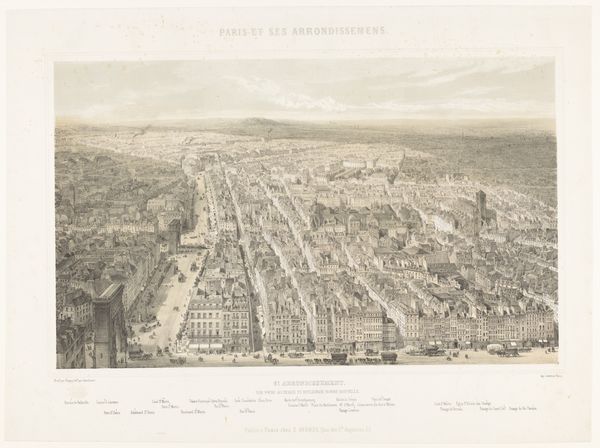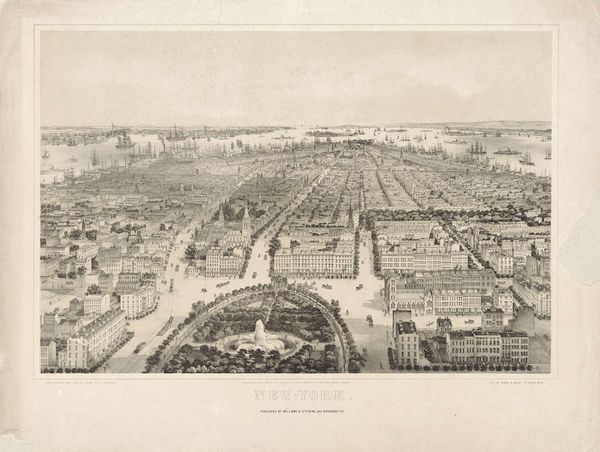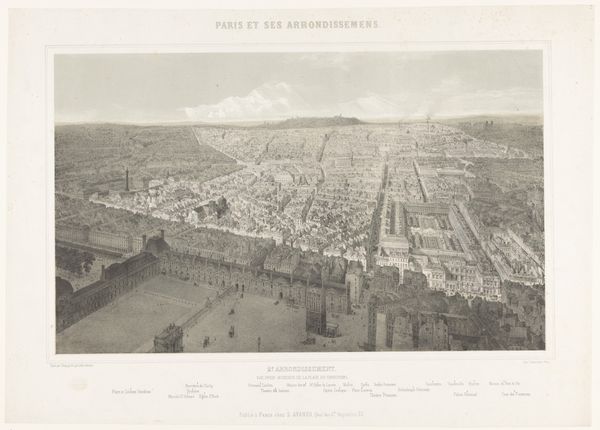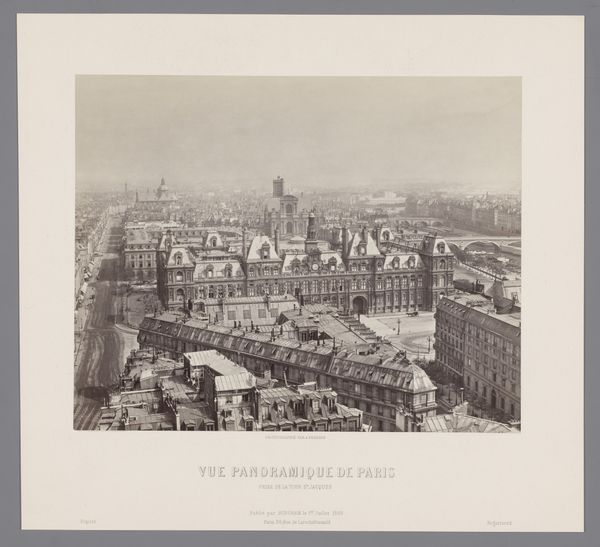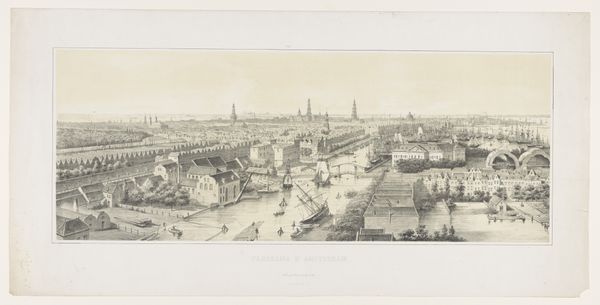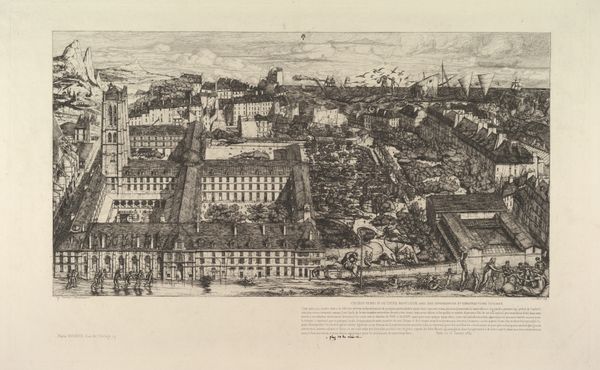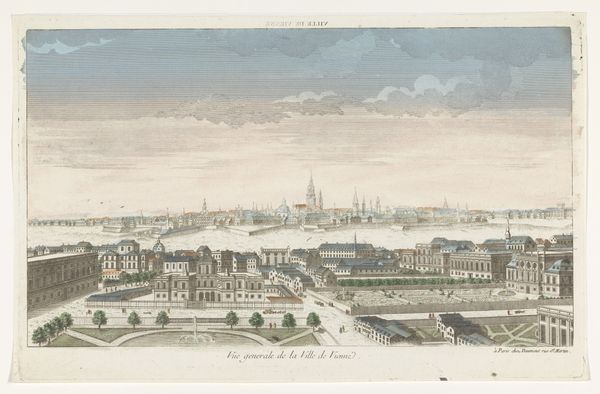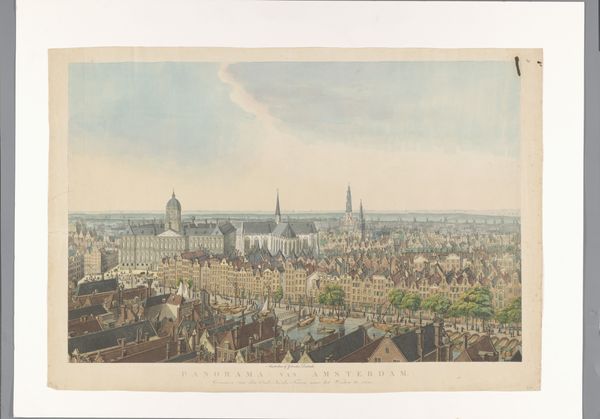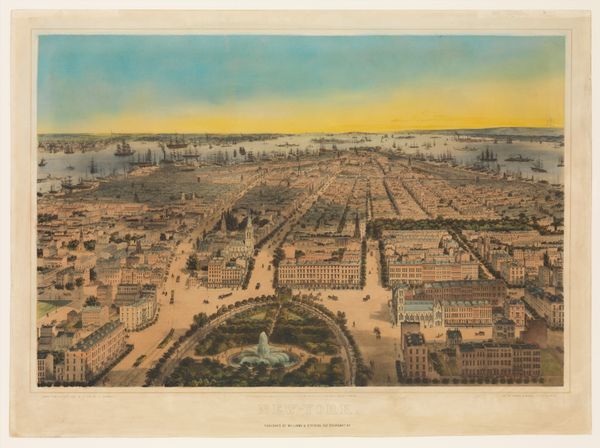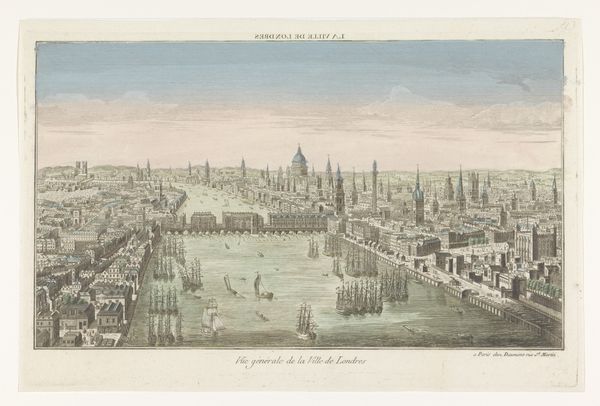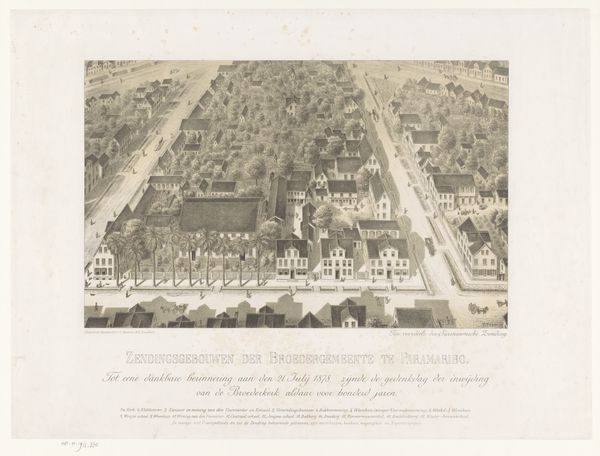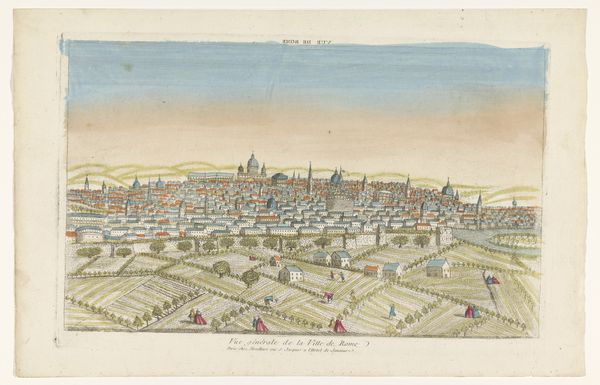
print, etching, photography, engraving
# print
#
etching
#
landscape
#
photography
#
cityscape
#
engraving
Dimensions: height 395 mm, width 522 mm
Copyright: Rijks Museum: Open Domain
Editor: We’re looking at Louis Jules Arnout’s "View of the Fifth Arrondissement of Paris," created around 1850 using etching and engraving techniques. It’s a sprawling cityscape. What strikes me is the sheer density of it all—the way the buildings just stretch on and on. What do you make of it? Curator: Notice how Arnout meticulously constructs this urban vista. The graphic articulation relies heavily on line. Observe how the repeated geometric forms—rectangles of buildings, triangles of roofs—create a complex, almost textile-like surface. It becomes a play between order and chaos, wouldn’t you agree? Editor: Yes, I do. The detail is amazing, but it’s also a bit overwhelming. There's so much to take in that it is difficult to really focus on anything. Do you think this composition affects how the viewer is meant to perceive Paris? Curator: Consider the compositional strategy. The elevated perspective flattens the image, prioritizing surface pattern over depth. Individual stories fade into the larger structural arrangement, turning social context into just mere texture. So, is this depiction celebratory or critical? Or something in between? Editor: Interesting point. I hadn't thought of it that way. Looking at it again, there is a real distancing that it creates. You see the forest, but you lose the trees! Curator: Exactly. The materiality itself--the etched line--plays a crucial role. Its fineness allows for this intricate detailing, but also creates a certain coldness, an objective remove. Perhaps a kind of early, urban semiotics is in effect here. Editor: So it is saying something about structure more than about society itself, which may have been hard to identify at the time anyway? I am sure there were many social changes taking place, even just a little after this. Curator: Precisely. Its focus on the urban landscape reduces the complex social, cultural, and historical dynamics into mere components of a larger, self-contained formal system. Thank you for assisting with this decoding of an historical view, one that now has revealed additional insights! Editor: Thank you, this formalist approach provides an interesting framework for interpreting this detailed work of art. I'll certainly look for some of these things moving forward.
Comments
No comments
Be the first to comment and join the conversation on the ultimate creative platform.
